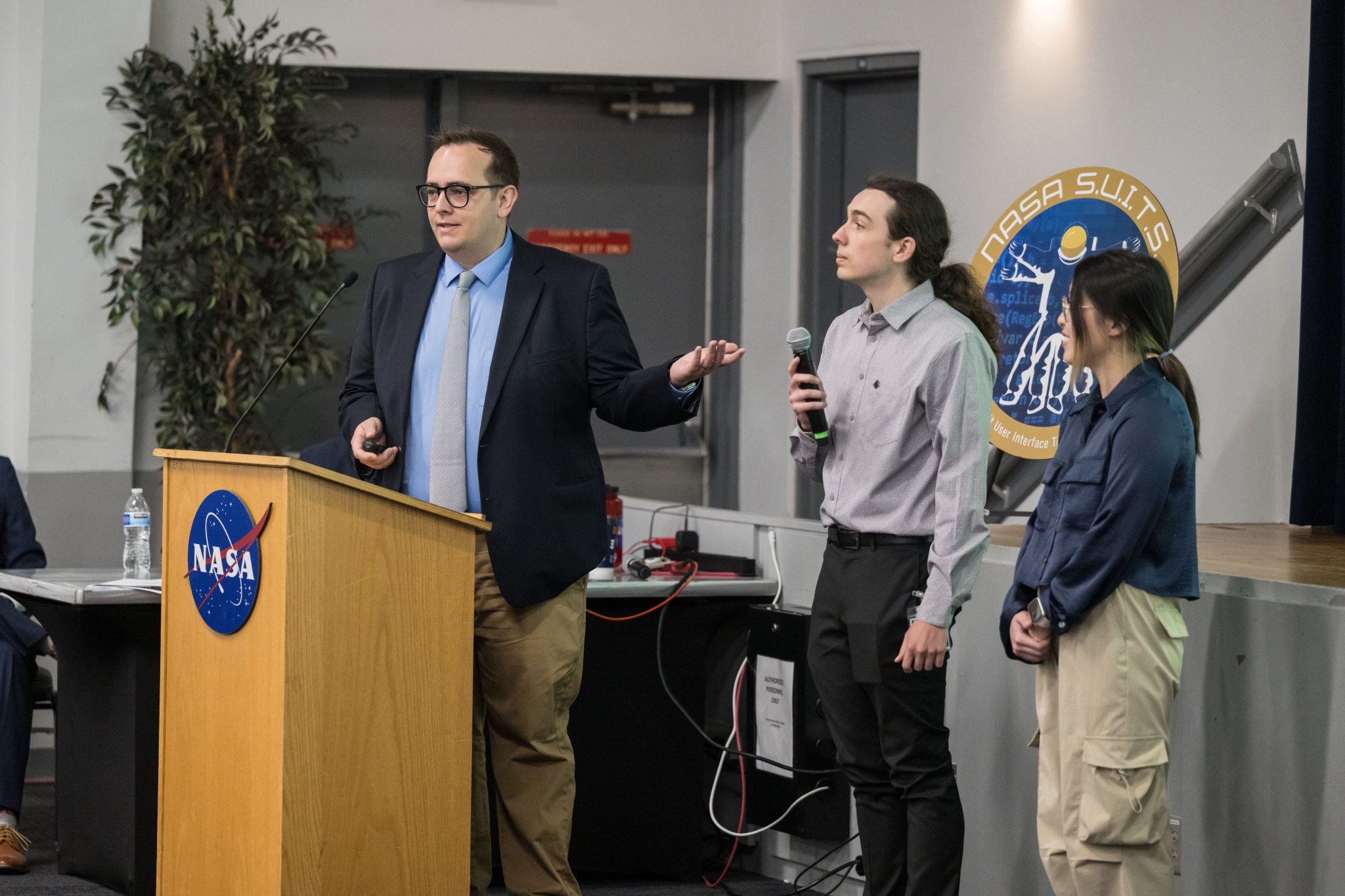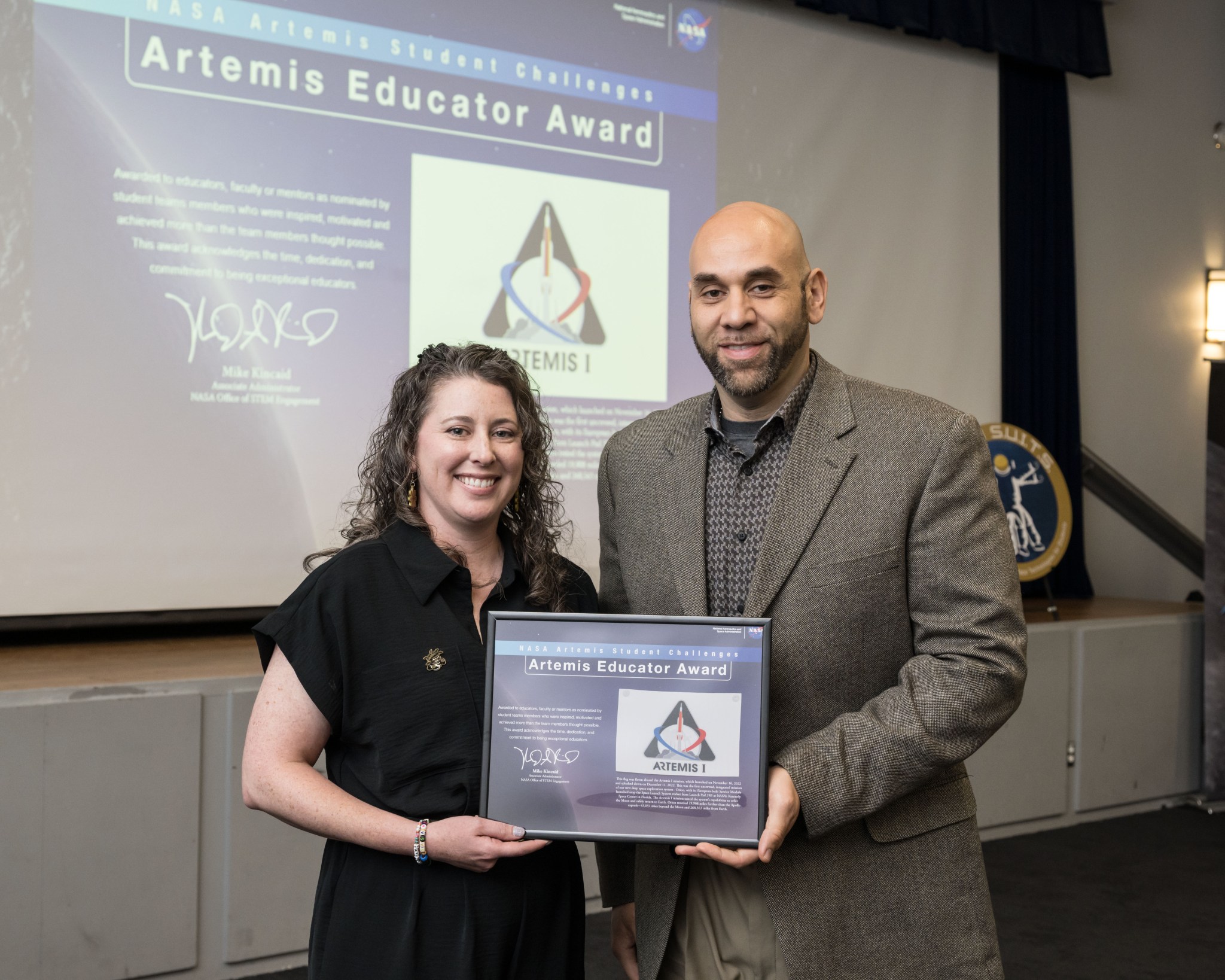After months of work in the NASA Spacesuit User Interface Technologies for Students (SUITS) challenge, more than 100 students from 12 universities across the United States traveled to NASA’s Johnson Space Center in Houston to showcase potential user interface designs for future generations of spacesuits and rovers.
NASA Johnson’s simulated Moon and Mars surface, called “the rock yard,” became the students’ testing ground as they braved the humid nights and abundance of mosquitoes to put their innovative designs to the test. Geraldo Cisneros, the tech team lead, said, “This year’s SUITS challenge was a complete success. It provided a unique opportunity for NASA to evaluate the software designs and tools developed by the student teams, and to explore how similar innovations could contribute to future, human-centered Artemis missions. My favorite part of the challenge was watching how the students responded to obstacles and setbacks. Their resilience and determination were truly inspiring.”
Students filled their jam-packed days not only with testing, but also with guest speakers and tours. Swastik Patel from Purdue University said, “All of the teams really enjoyed being here, seeing NASA facilities, and developing their knowledge with NASA coordinators and teams from across the nation. Despite the challenges, the camaraderie between all the participants and staff was very helpful in terms of getting through the intensity. Can’t wait to be back next year!”
“This week has been an incredible opportunity. Just seeing the energy and everything that’s going on here was incredible. This week has really made me reevaluate a lot of things that I shoved aside. I’m grateful to NASA for having this opportunity, and hopefully we can continue to have these opportunities.”
At the end of test week, each student team presented their projects to a panel of experts. These presentations served as a platform for students to showcase not only their technical achievements but also their problem-solving approaches, teamwork, and vision for real-world application. The panel–composed of NASA astronaut Deniz Burnham, Flight Director Garrett Hehn, and industry leaders–posed thought-provoking questions and offered constructive feedback that challenged the students to think critically and further refine their ideas. Their insights highlighted potential areas for growth, new directions for exploration, and ways to enhance the impact of their projects. The students left the session energized and inspired, brimming with new ideas and a renewed enthusiasm for future development and innovation. Burnham remarked, “The students did such a great job. They’re all so creative and wonderful, definitely something that can be implemented in the future.”
NASA SUITS test week was not only about pushing boundaries; it was about earning a piece of history. Three Artemis Student Challenge Awards were presented. The Innovation and Pay it Forward awards were chosen by the NASA team, recognizing the most groundbreaking and impactful designs. Students submitted nominations for the Artemis Educator Award, celebrating the faculty member who had a profound influence on their journeys. The Innovation Award went to Team JARVIS from Purdue University and Indiana State University, for going above and beyond in their ingenuity, creativity, and inventiveness. Team Selene from Midwestern State University earned the Pay it Forward Award for conducting meaningful education events in the community and beyond. The Artemis Educator Award was given to Maggie Schoonover from Wichita State University in Kansas for the time, commitment, and dedication she gave to her team.
“The NASA SUITS challenge completes its eighth year in operation due to the generous support of NASA’s EVA and Human Surface Mobility Program,” said NASA Activity Manager Jamie Semple. “This challenge fosters an environment where students learn essential skills to immediately enter a science, technology, engineering, and mathematics (STEM) career, and directly contribute to NASA mission operations. These students are creating proposals, generating designs, working in teams similar to the NASA workforce, utilizing artificial intelligence, and designing mission operation solutions that could be part of the Artemis III mission and beyond. NASA’s student design challenges are an important component of STEM employment development and there is no better way to learn technical skills to ensure future career success.”
The week serves as a springboard for the next generation of space exploration, igniting curiosity, ambition, and technical excellence among young innovators. By engaging with real-world challenges and technologies, participants not only deepen their understanding of space science but also actively contribute to shaping its future. Each challenge tackled, each solution proposed, and each connection formed represents a meaningful step forward; not just for the individuals involved, but for humanity as a whole. With every iteration of the program, the dream of venturing further into space becomes more tangible, transforming what once seemed like science fiction into achievable milestones.
Are you interested in joining the next NASA SUITS challenge? Find more information here.
The next challenge will open for proposals at the end of August 2025.
from NASA https://ift.tt/vBKZ0Hj




